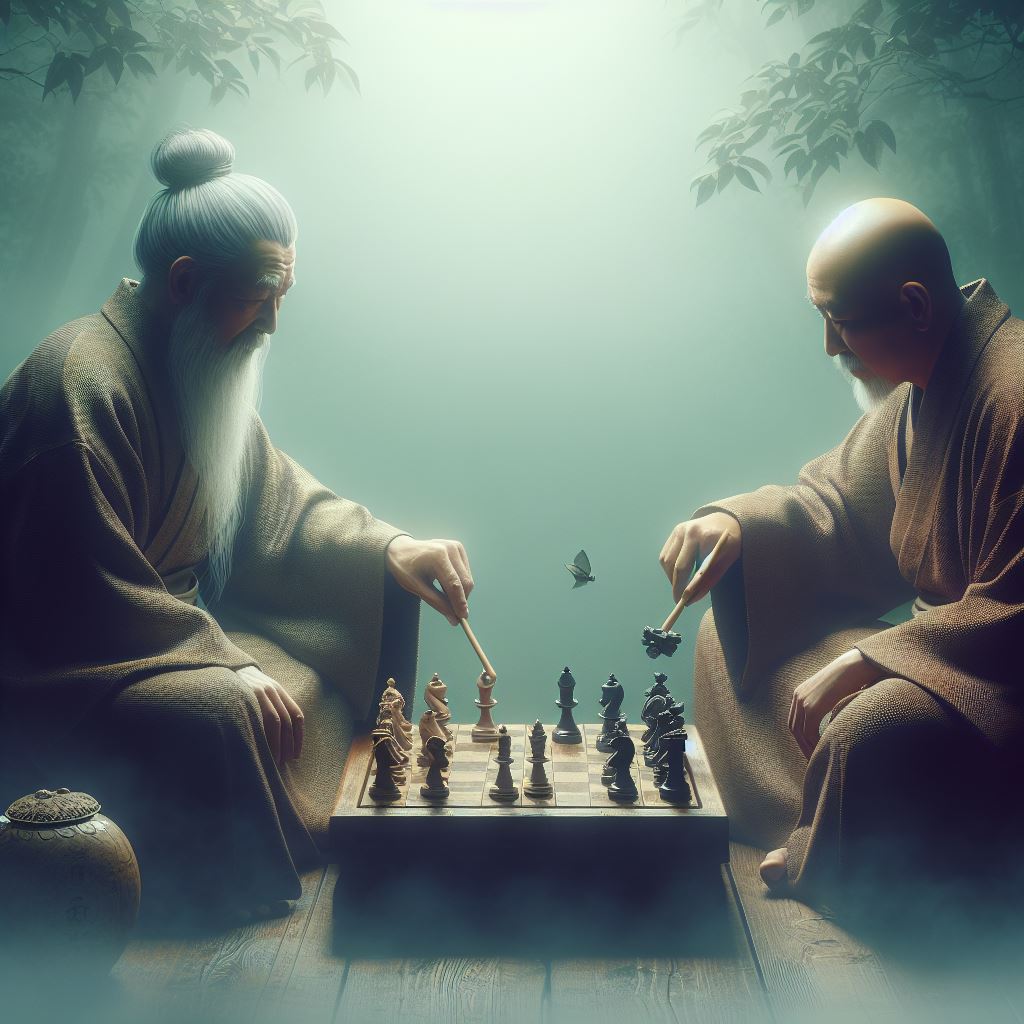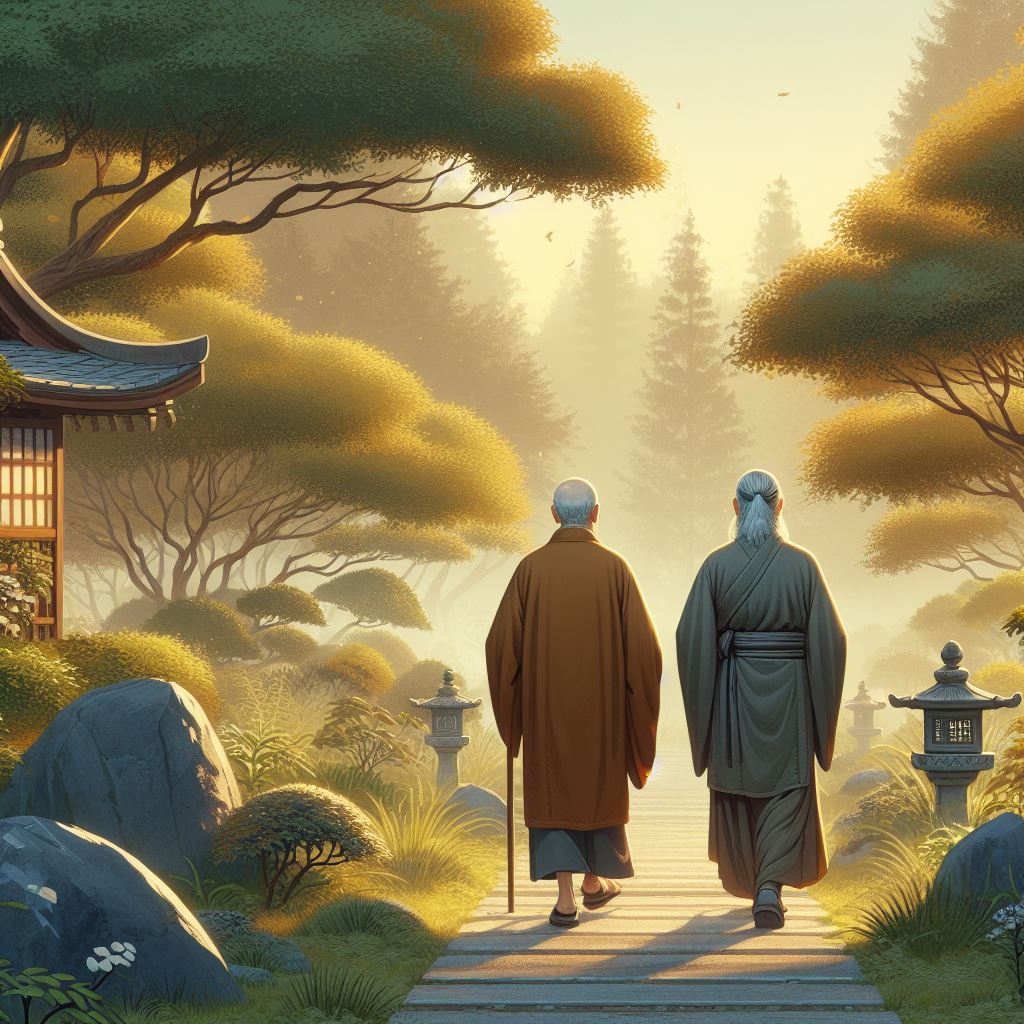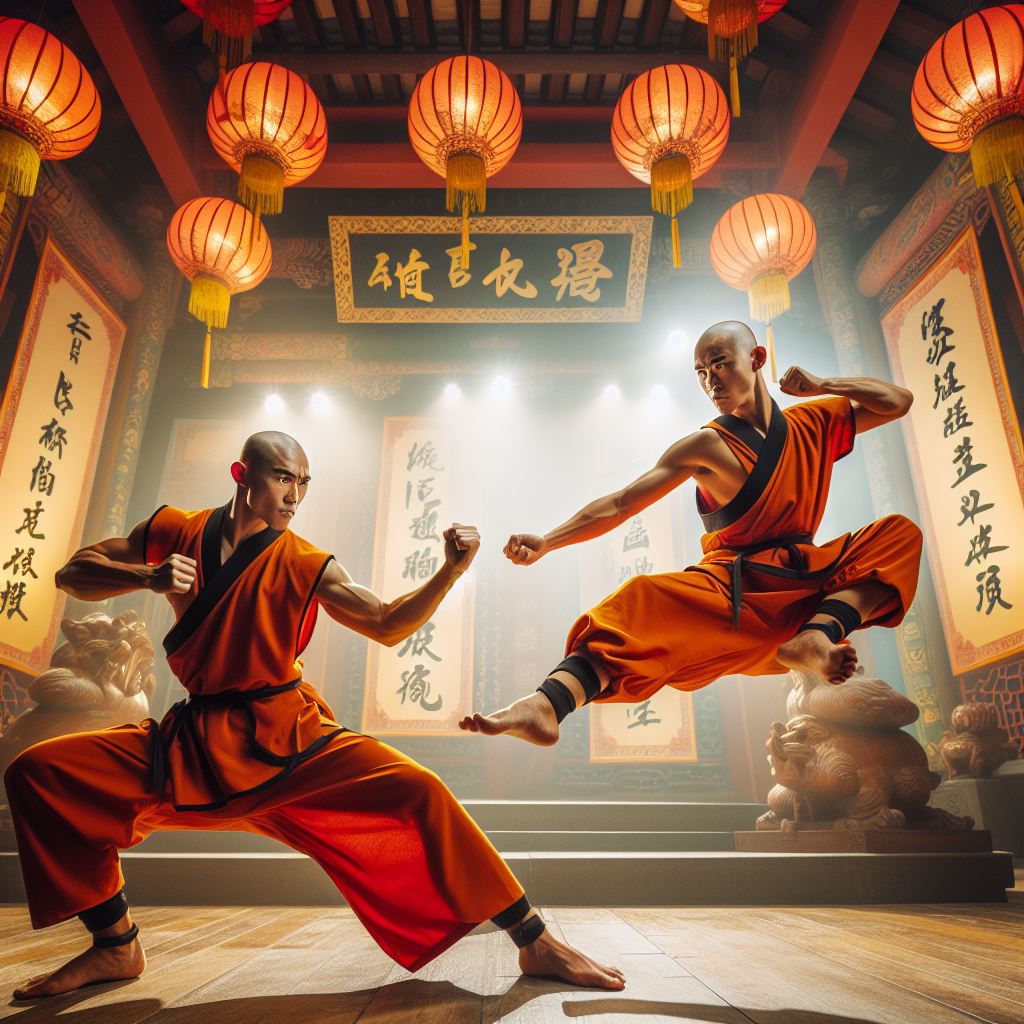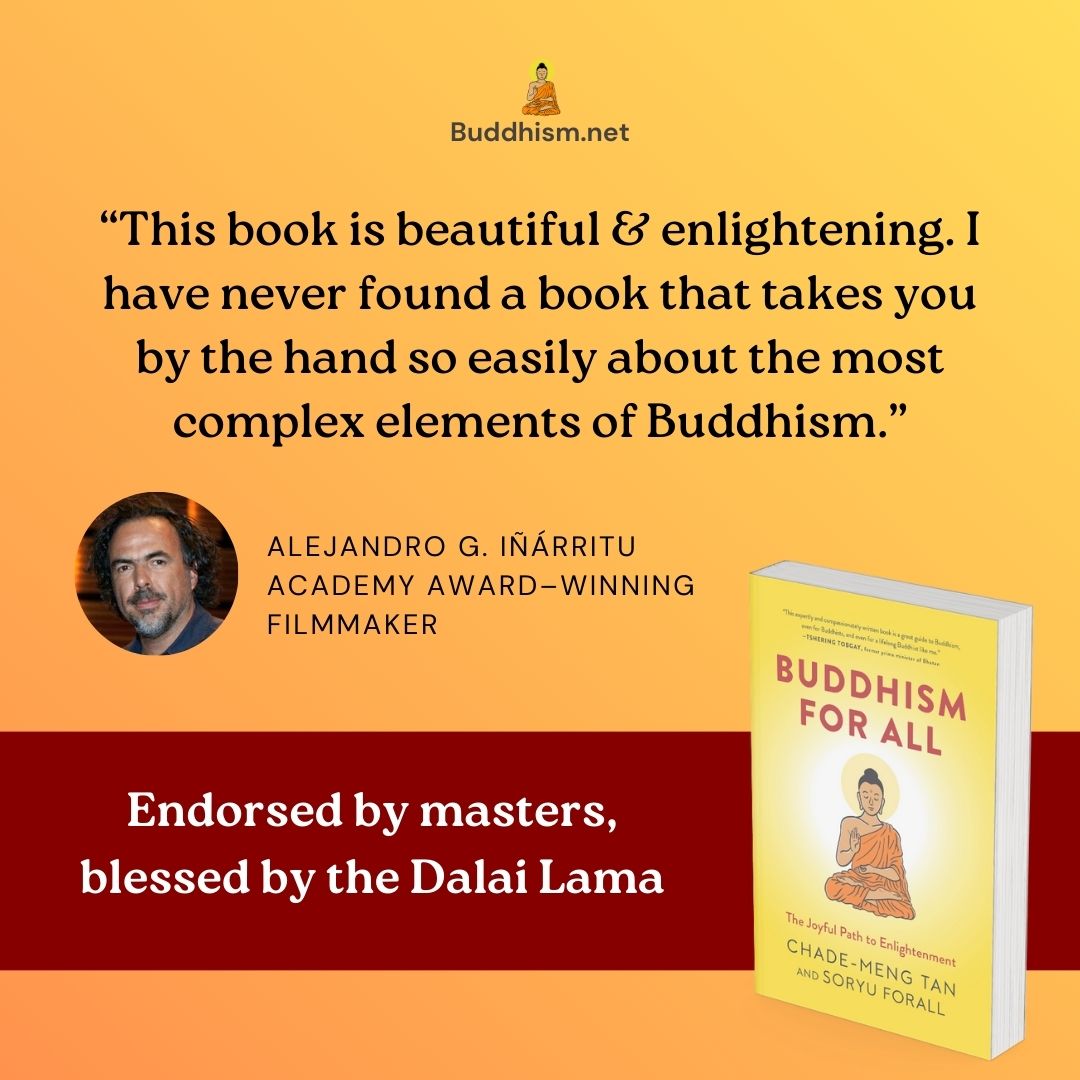The following conversation happened online, on our Facebook page, as comments on a particular post, between a reader A (not his real name), and Soryu Forall. We are sharing it here, with the intention that this conversation may benefit more people, in their journey on their quest for awakening to the deathless.
Background
The post, is the one titled, “Abbot’s Commentary: You Can Do It“
“Imagine a man holding onto a chain attached to a stake in the ground. He has been circling around that stake for years, walking thousands of miles without going anywhere…”
A to Soryu Forall, First Comment on post
Dear proclaimed abbot, Soryu Forall.
Imagine the man with the chain attached to a stake in the ground just sits down and be happy just being here. Happy being now. What then is there to let go? By sitting down and being happy just as it is, is his life better off or worse off?
I am surprised by your comments. I thought you are a Zen monk with a Zen lineage? You do not point readers to the most important place – their nature. Instead you talked about “ending imprisonment”, “better life”, letting go of the “chain”. That is not prajna. That is motivational talk.
The key in your story is not that the man is holding on to the chain that is attached to a stake in the ground. That is NOT suffering. It is the fact that he is walking thousands of miles. Whether he holds on to a chain, stake or not, is NOT the cause of his suffering, it is the walking thousands of miles! If he just sits down and just BE, Here and Now! What suffering is there then?
Third Noble Truth therefore has nothing to do with whether you can or cannot do it. It is when you have penetrated the first two Noble Truths that the Third Noble truth will be revealed – and that is suffering is not real.
Suffering is not real does not mean we no longer suffer. Our body will still feel pain when the four elements are not in balance. But for one who has already penetrated the truth of suffering and causes of suffering, that pain will no longer torment the mind of the awakened person. Jet Li (李连杰 Jet Li), who has been a devout long-time dharma practitioner, in his reply to Dzongsar Rinpoche (Dzongsar Jamyang Khyentse) on whether his body still feels pain now said “My body still aches but I no longer suffer (痛但不苦).
Let me quote a section from Eckhart Tolle’s (Eckhart Tolle) (I believe he never claimed to be an abbot) book “The Power of Now”, on suffering:
“All cravings are the mind seeking salvation or fulfillment in external things and in the future as a substitute for the joy of Being. As long as I am my mind, I am those cravings, those needs, wants, attachments, and aversions, and apart from them there is no “I” except as a mere possibility, an unfulfilled potential, a seed that has not yet sprouted. In that state, even my desire to become free or enlightened is just another craving for fulfillment or completion in the future. So don’t seek to become free of desire or “achieve” enlightenment. Become present. Be there as the observer of the mind. Instead of quoting the Buddha, be the Buddha, be “the awakened one,” which is what the word buddha means.”
I’m sure you’d agree with me, (if you are the Zen Abbot that you proclaim yourself to be), having read his comment, that he has touched true nature.
Your comments please, Zen Master 4All.

Soryu Forall to A, First Reply
A,
Good to hear from you. Your question brings up many important and profound issues, and I’m happy to have this chance to answer and clarify.
Let me begin with a point about terminology before approaching your main point. I am an “abbot” because I’ve taken responsibility for a place of training. My job is to give practical and spiritual support to the Sangha for the sake of practicing the Way. That this is my job, my position, is not a subjective claim, just an objective statement. I am an abbot whereas Tolle is not, because we have chosen different jobs. It’s like claiming to be a CEO of a corporation. It is a factual claim that can be verified, with no character assessment involved. One need not claim to be a good CEO to claim that one is a CEO, and I don’t claim to be a good abbot. I’m just reporting on an objective situation. Furthermore, I have never claimed to be a Zen Master.
OK, now regarding the metaphor: it is based on one the Buddha used in a few different ways, for example in the Gaddulabaddha Sutta (SN 22.99), a text which makes the point that the problem is being bound by clinging, in particular to the aggregates. So, the point is that clinging is the problem. Clinging is what prevents us from realizing our “true nature”. If the man is walking somewhere, the problem is if he’s clinging to walking somewhere. If he’s sitting still, the problem is if he’s clinging to sitting still. The question then is whether the practice of sitting down here and now, and just being, is the end of clinging.
There is no doubt that sitting down here and now and just being is an essential practice. It is of paramount importance. I appreciate that you emphasize it so skillfully. But I would not say that it is the ultimate, the goal, liberation, nirvana, or as Zen tradition might say, our true nature. Incredibly, even here and now is a fabrication. Anywhere at all we try to take a stand, even here and now, becomes the place where we suffer. This point is made clearly in the Dighanaka Sutta (MN 74). Any position we hold becomes the basis of conflict.
This teaching is worth examining even as we engage in this very dialogue.
I believe you have some background in the the Zen School of Mahayana Buddhism (禪宗). There are a number of significant figures in that school. One of them is 三祖僧璨禪師 (The Third Patriarch, Master Jiànzhì Sēngcàn). Master Sēngcàn wrote a well-known poem named 信心銘, usually translated as “Verses on Believing in Mind” or simply “Faith in Mind”. In this poem, he says, “止動歸止,止更彌動”, which can’t be rendered into English so beautifully (you’re fortunate in being able to read it in the original) but one attempt is, “If you stop activity and return to stillness, then that very stillness will be all the more active”.
Even if we try to return to stillness as the solution to clinging, if we cling to that stillness, it becomes the place where problems arise.
One of the very few Zen Masters who is generally accorded even more reverence than Master Sēngcàn is 六祖 惠能 (The Sixth Patriarch, Master Huìnéng). This Great Master Dàjiàn (大鑒大師) is said to have been enlightened when he heard the Diamond Sutra (Vajracchedikā Prajñāpāramitā Sūtra). The Dharma he heard at that time was: “諸菩薩摩訶薩應如是生清淨心 … 應無所住而生其心”. These characters are the Venerable Kumārajīva’s more or less literal translation from the original Sanskrit, “bodhisatvena evaṃ cittam utpādayitavyaṃ apratiṣṭhitaṃ … na kvacitpratiṣṭhitaṃ cittam utpādayitavyam”, which I would render in English as, “A Bodhisattva should give rise to this aspiration [referring to the previously described Bodhicitta, or aspiration for enlightenment for all beings] in a way that is not fixed … should give rise to an aspiration that is not fixed anywhere at all.”
Master Huìnéng emphasized this teaching for his entire life. In particular, he emphasized the realization of no location. While it is essential that we settle here and now, if we take a stand here, if we cling to this place and this time, then we fail to see that even the present moment is a construction. Even this here now is not our true nature. And of course if we cling to movement, to some other place, to gaining something, to becoming someone, to walking thousands of miles, that also is suffering, not our true nature.
But when we are not fixed anywhere, then naturally, great compassion arises, and we find ourselves walking thousands of miles to help millions of beings, without holding on to any idea of self, walking, or beings. Bodhicitta has arisen in our daily life without being anywhere at all.
In this way, we can understand the metaphor. “To be fixed” is like walking thousands of miles while holding the chain. “To sit down and be here now” is the method for using this settled body and mind as the place of practice for letting go. “To not be fixed anywhere” is like letting go of the chain. “Compassion arising for all beings everywhere” is like walking thousands of miles after letting go, working to help all beings beyond suffering, without being caught in suffering.
In fact, settling here and now is so powerful precisely because it is so hard to hold on to it. As we go further into the present, the less we find. We can’t find anything called this moment. We can’t find anything called this place. And we definitely can’t find anything called being.
So while settling here and now is of the utmost importance as a practice, truly unappreciated by most practitioners of the Way, an exalted practice that isn’t exalted enough, brilliant beyond measure and the means by which our minds reach the further shore, it is still not the end.
To quote the poem, “Faith in Mind” again, “非去來今”, “Not past, future, or present”. This is so important for us to see, that he concludes the poem with this statement. Not only is it not of the past or future; it is not even of the present.
You asked for my opinion on whether the comment you included by Tolle touches true nature. I haven’t looked that comment up, so I don’t know the context. Also, I don’t know him, so I won’t comment on him or his insights here. But I can say that I don’t see how the passage you included touches true nature. It is powerful, insightful, lucid and helpful. It is deeply caring and skillful to say that we don’t seek to become enlightened. But even to become present, even to become an observer, even to become one who is awakened, is still becoming. Even this is a fixation. Is fixation our true nature? We must deeply examine this question.
But how?
Well, as you so sincerely point out, his instruction is a supremely helpful part of the Path. Like all parts of the Path, we use it to go beyond it. So, to examine the above question, we ask, “To be so present that we can’t find the present, to observe so carefully that we cannot observe anything, to see and hear and feel so completely that we don’t see or hear or feel anything at all, to be so aware that we don’t experience any form of consciousness whatsoever, to drop even this here now: What is that?”
May this be a question, rather than a position.

A to Soryu Forall, second comment
Dear Master Soryu,
Let me first prostrate to you three times as a show of respect to you, your teachings, and also to apologize for the tone of the message on FB.
I have read through your message diligently and joyfully. It is truly eye opening and I fully agree with all that you have mentioned. “Here and Now”, “stillness”, and so on are also concepts! You are absolutely right! As long as we are holding on to something, then there is clinging. Thank you so much for the pointing out. Sadhu Master.
To me “Not (非 or 无)” as in “非去來今”, “Not past, future, or present” is not “not at all” but a beautiful trancedended communication by Buddha of “yes but no, no but yes”. Your quote of “非去來今” is wonderfully timed. I nod in agreement with all you have said.
Your final question:
“To be so present that we can’t find the present, to observe so carefully that we cannot observe anything, to see and hear and feel so completely that we don’t see or hear or feel anything at all, to be so aware that we don’t experience any form of consciousness whatsoever, to drop even this here now: What is that?”
I cannot answer. I will seek the refuge of Buddha, Dharma, and Sangha to answer this question. May mahaprajna paramita reflect the answer.
I hope you can continue to respond to more questions on Buddhism.net to help more people and myself. I also hope we can meet each other someday so that I can prostrate to you in person.
Thank you dear Master Soryu.

Soryu Forall to A, second reply
A,
I appreciate your honesty in explaining your feelings regarding my reply, and the respectful way you expressed them. If we are not honest, any genuine conversation ends right there. And if we are not respectful, it becomes difficult to continue the conversation at all. But this dialogue continues and is genuine. Thank you for that.
To speak of clarity is difficult, but it is beautiful and fulfilling. To speak of the way to clarity is even more difficult, and it isn’t always beautiful and fulfilling. Sometimes it’s just simple hard work.
To put this in terms of the Four Noble Truths, the Third is sublime in its utter purity. It’s simple beyond one, beyond zero, beyond everything. The Fourth is complex and practical. It speaks of eight of these and seven of those and maybe even thirty-seven of lots of things. While it is very difficult to speak skillfully of Nirvana, it is even more difficult to speak skillfully of the path to Nirvana.
To speak of Nirvana, one must let go of everything and speak from Original Mind. But to speak of the Path, it isn’t enough to speak from Original Mind. One must speak having let go of even that. This is not to be taken lightly.
This is a matter of practice. It isn’t so romantic. Idealistic enthusiasm is sufficient to begin. But at some point, we need to do hard work whether it’s ideal or not, whether we are enthusiastic or not. This is why, having had a beautiful discussion with you about the nature of mind, I now ask about practice. It’s just the natural next step.
I’m glad to hear that you practice in the Kagyu style. I had the good fortune to live and train at a Kagyu Monastery in northern India. I even had the chance to meditate in a cave where it is said the great yogi Milarepa practiced.
Jetsun Milarepa was truly a great master. There is no end to the honor offered to him by Tibetan teachers around the world. Those of us who have some connection with him, not only revere him, but love him. He taught many profound doctrines to many brilliant disciples. Yet near the end of his life, he imparted to Gampopa, one of his most brilliant disciples, a final teaching. It began with the instruction to give up pride, a point we should all take to heart. But it ended in a way that truly touches the heart of any practitioner of this path. He said, “My attainment of great realization came from this:” and then did something shocking. He lifted up his robe and showed his buttocks. Why would he do such a thing? To reveal the callouses that had accumulated there due to countless thousands of hours of meditation. This revealed his great efforts over a long time. He said that effort is the essence of his teaching, and that we need effort more than we need any doctrine.
I know a Tibetan teacher who, when recounting this story, broke down in tears. Is this not astounding? Why would an enlightened master weep openly? No sincere Buddhist could take this lightly.
This is the reason I asked, “Is fixation our true nature?” This question is not to be taken lightly. If the answer is Yes, then everyone who lives according to greed, hatred and delusion is already enlightened, so there is no path and no reason to practice. If the answer is No, then no one who lives according to greed, hatred and delusion could ever get enlightened, so there is no path and no reason to practice.
Yet there is a path, and there is a reason to practice.
Therefore, if someone were to ask me, “Is fixation our true nature?” I would not offer doctrine, and I would not tell anyone what to do. I would just say, “Practice!”



